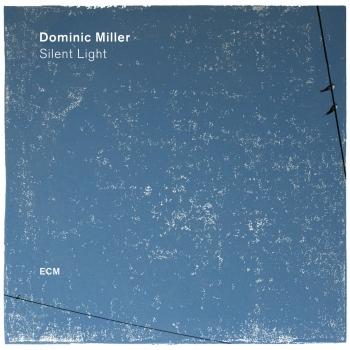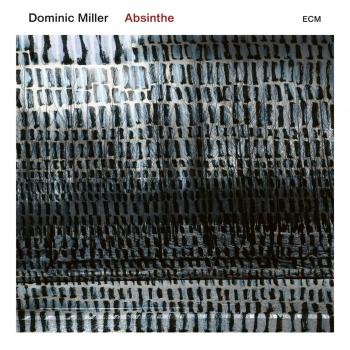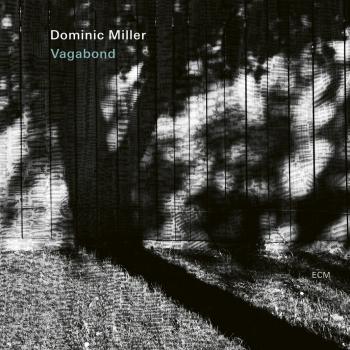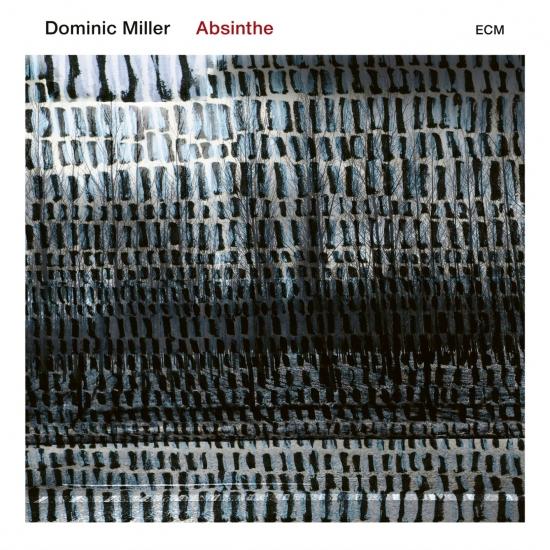
Absinthe Dominic Miller
Album info
Album-Release:
2019
HRA-Release:
01.03.2019
Album including Album cover Booklet (PDF)
I`m sorry!
Dear HIGHRESAUDIO Visitor,
due to territorial constraints and also different releases dates in each country you currently can`t purchase this album. We are updating our release dates twice a week. So, please feel free to check from time-to-time, if the album is available for your country.
We suggest, that you bookmark the album and use our Short List function.
Thank you for your understanding and patience.
Yours sincerely, HIGHRESAUDIO
- 1Absinthe05:28
- 2Mixed Blessing04:48
- 3Verveine01:45
- 4La Petite Reine02:14
- 5Christiania04:30
- 6Étude05:42
- 7Bicycle03:52
- 8Ombu03:41
- 9Ténèbres04:23
- 10Saint Vincent05:27
Info for Absinthe
With Absinthe, his second release for ECM, guitarist Dominic Miller has created an album colored by a distinct atmosphere. “The first thing that came to me before I wrote any tunes was the title,” he says. “Living in the South of France, I am fascinated by Impressionism. Sharp light and witchy mistrals, combined with strong alcohol and intense hangovers must have driven some of these artists toward insanity. Skies that are green, faces blue, perspective distorted.” While Miller’s ECM debut, Silent Light, emphasized intimacy in solo and duo settings, Absinthe finds the guitarist fronting a quintet that brings his ever-lyrical compositions to textured life. Miller, switching between nylon- and steel-string acoustic guitars, has a key harmonic-melodic foil in the bandoneon of Santiago Arias. The vivid presence at the drum kit is Manu Katché, an ECM veteran and for years a colleague with Miller in the band of Sting (whom the guitarist has accompanied now for three decades). Mike Lindup’s keyboard tones add a ghostly air to such highlights as the title track, while bassist Nicholas Fiszman roots the sound. As for Miller, JazzTimes described him as a guitarist who “milks every note, thriving on the pauses between them and whispery effects of fingers sliding across strings,” while Stereophile agreed, declaring that “his ability to express emotion through a guitar is amazing to hear.”
With Absinthe, guitarist Dominic Miller has created an album colored by a distinct atmosphere. “The first thing that came to me before I wrote any tunes was the title,” he writes in his liner note. “Living in the South of France, I am fascinated by Impressionism. Sharp light and witchy mistrals, combined with strong alcohol and intense hangovers must have driven some of these artists toward insanity. Skies that are green, faces blue, perspective distorted.” While Miller’s ECM debut, Silent Light, emphasized solo and duo settings, Absinthe finds the guitarist fronting a quintet that brings his lyrical compositions to textured life. Miller, switching between nylon- and steel-string acoustic guitars, has found a key harmonic-melodic foil in the bandoneon of Santiago Arias. The vivid presence at the drum kit is Manu Katché, for years a member alongside Miller in the band of Sting. Mike Lindup’s keyboard tones can glow or add a ghostly air (as they do in such highlights as the title track), while bassist Nicholas Fiszman roots the ensemble sound. As for Miller, JazzTimes has described him as a guitarist who “milks every note, thriving on the pauses between them and whispery effects of fingers sliding across strings.”
Not only was Absinthe conceived in the South of France, that’s also where Miller and band recorded the album, working with Manfred Eicher in the studio of La Buissonne, in Pernes-les-Fontaines. The ambience was ideal, Miller says: “It’s a great atmosphere in which to work. And I love collaborating with Manfred – he’s a real producer. I think back to the inspiring authenticity of those records he made with Egberto Gismonti. They were so important to me…
“For my two ECM albums, and especially this new one, my initial idea of a tune can be like a simple selfie,” Miller explains. “But once we’re done working on it together, the piece becomes this rich photographic still, with all the light and shade of life in it. Manfred helps bring out the essence of the music, often pushing us out of our comfort zones in the process. But I’m up for it – we rethought, redesigned and reinterpreted every tune in the studio. I’ve made about 250 pop and rock records over the years, and that’s often a process about achieving so-called perfection. But Manfred isn’t after this kind of perfection.”
Born in Argentina to an American father and Irish mother, Miller was raised in the U.S. from age 10 and then educated there and in England. The guitarist’s international mindset has only been deepened through decades touring the globe, working with the likes of Paul Simon, The Chieftains, Plácido Domingo and, most often, Sting. Miller has long been known as the latter’s right-hand man on guitar – and co-writer of “Shape of My Heart,” among others. “I’ve been influenced by Sting’s lateral sense of harmony and how he forms songs,” the guitarist says. “I try to do the same by creating a narrative with instrumental music, which I treat and arrange as songs, with verses, choruses, bridges. I’ve absorbed a lot from him about concept and arrangement, as well concision in telling a story.”
Miller heard Katché’s rhythmic/coloristic touch in his ear for decades, while Fiszman plays in the guitarist’s current live group. The simpatico match of drums and bass here is highlighted by their exchanges in “Ombu,” a track named for a tree in Argentina with vast roots. Miller only recently discovered Arias, having encountered him in Buenos Aires. “I was on tour there and I went out on a night off to see a jam featuring some top local musicians. They were all pointing out this young bandoneon player. Witnessing Santiago play – this acoustic, non-tango indigenous Argentinean music, mixed with European influences – I felt a spark. I wrote the music of Absinthe with the timbre of his instrument and his sense of space in mind.”
Arias’s bandoneon plays a vital role throughout the album, whether atmospherically in such pieces as the shadowy “Ténèbres” or as a soloistic voice in “Saint Vincent.” The title of the latter song refers not to Van Gogh but to the late Cameroonian guitarist Vincent Nguini, a longtime collaborator with Paul Simon and something of a mentor figure for Miller. “Vincent had such a special ‘time feel,’ as drummers like to talk about,” he says. “With the way he used time, you could hear that it was him from just a few notes.”
The title track of Absinthe begins with Miller’s hands fingering the nylon strings of a small-body guitar with his characteristic “artisanal precision,” as the Irish Times put it. After two minutes of melodic development with just guitar and bandoneon, Katché’s beat comes in strikingly, boosted by Fiszman’s deep bass. The piece immediately takes on the drama of a story, with Lindup’s synthesizer line whirring subtly through the arrangement like a specter, adding something otherworldly to the narrative. “I wanted the synth to add a disrupting element, like an absinthe-induced wooziness,” Miller explains. “I’ve known Mike for years and trust implicitly what he can bring to my music, whether it’s a touch of off-kilter synth or flowing piano, as on ‘Etude’ and ‘Verveine.’ The latter song, by the way, is named for a kind of herbal tea they have in France that I like. It’s supposedly good for hangovers, so I guess the old painters might’ve used it as a calming antidote after the visions of absinthe.”
Dominic Miller, guitar
Manu Katché, drums
Nicolas Fiszman, bass
Mike Lindup, keyboards
Santiago Arias, bandoneon
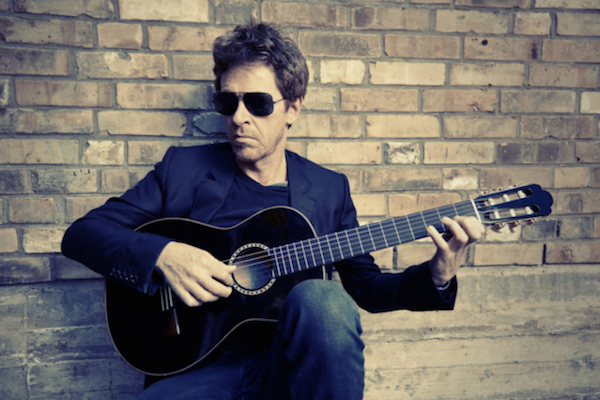
Dominic Miller
is a guitarist best known for his work with Sting. Born 21st March 1960 in Buenos Aires he now lives with his family in his adopted country of France.
Alongside his work with Sting he regularly plays with other well known musicians such as Mike Lindup, Nigel Kennedy, Sarah Jane Morris and Rhani Krija. Little wonder that over the years he’s been responsible for many musical ear-worms such as: Stings “Shape of my Heart” and Ronan Keatings “You say it best” from the Film “Notting Hill”).
Currently he’s working on a new solo electric guitar album which is a departure from previous albums featuring acoustic guitar.













